A New Decentralized Control Strategy of Microgrids in the Internet of Energy Paradigm
Abstract
1. Introduction
1.1. Related Works
1.2. Paper Contribution
- Firstly, the researchers investigated the MAS-controlled MGs in the Energy Internet, which has not been reported in the past.
- Secondly, the researchers proposed a distributed secondary control of the MGs, which enabled the group plug-and-play feature after considering all interactions between and amongst the multiple MASs, which were differently owned.
- Thirdly, they implemented a framework for the proposed control technique using MAS and cloud servers.
- Furthermore, we proposed an IoT-based communication protocol, which included specifications like MQTT. This improves system flexibility. The proposed system offered analytics and business intelligence (BI), which allowed the researchers to gain insights on the data collected by visualizing dashboards and reports. Additionally, the use of big data-based data storage technologies enabled the system’s scalability at the national level. This provided energy-efficiency strategies for the household owners and the utility companies.
- We implemented a hierarchical two-layered communication architecture based on the MQTT protocol and using the cloud-based server called ThingSpeak. This helped customers realize the global and local communications necessary for the neighborhood appliance controllers.
2. Proposed System Description
- ThingSpeak Cloud IoT platform data aggregation, tracking and analysis. In the smart grid model, the power profile is monitored on multiple ThingSpeak channels in real-time and depicted graphically.
- Security: The Username and password allow user authentication while each channel is equipped with its ID and accessible (see by other users). There are two keys in each channel for the application programming interface. A randomly generated read key and write key of the API. These keys can save or retrieve information from stuff from each channel over the Internet or LAN.
- It facilitates the double-way flow of data between the user and virtual device and allows data and remote control to be exchanged in real-time. The MATLAB Desktop Toolbox offers communication between the simulated feeding model and the ThingSpeak IoT platform.
- Communication network enabling for the data transmission over the Internet between MATLAB and ThingSpeak.
- Allows importing, exporting, analyzing and viewing data on multiple platforms and their fields simultaneously.
3. Proposed Hierarchical Control
3.1. Problem Formulation
3.2. Primary Control of Inverter-Based Distributed Generators
3.3. MASs Communication
3.4. Proposed Secondary Distributed Controller
4. Proposed Internet of Energy Communication Platform
4.1. MQTT Knowledge
4.2. Architecture of Proposed System
5. Result analysis and Discussion Proposed Method
5.1. Scenario I
5.2. Scenario II
5.3. Scenario III
5.4. Scenario IV
6. Access to Internet Web Page
6.1. Scenario I
6.2. Scenario II
6.3. Scenario III
6.4. Scenario IV
7. Conclusions
Author Contributions
Funding
Conflicts of Interest
References
- Fan, B.; Wang, X. Distributed Privacy-Preserving Active Power Sharing and Frequency Regulation in Microgrids. IEEE Trans. Circuits Syst. 2020, 1–5. [Google Scholar] [CrossRef]
- Wang, Y.; Nguyen, T.L.; Syed, M.H.; Xu, Y.; Guillo-Sansano, E.; Nguyen, V.-H.; Burt, G.M.; Tran, Q.-T.; Caire, R. A Distributed Control Scheme of Microgrids in Energy Internet Paradigm and Its Multisite Implementation. IEEE Trans. Ind. Inform. 2021, 17, 1141–1153. [Google Scholar] [CrossRef]
- Hou, X.; Sun, Y.; Lu, J.; Zhang, X.; Koh, L.H.; Su, M.; Guerrero, J.M. Distributed Hierarchical Control of AC Microgrid Operating in Grid-Connected, Islanded and Their Transition Modes. IEEE Access 2018, 6, 77388–77401. [Google Scholar] [CrossRef]
- Shafiee, Q.; Guerrero, J.M.; Vasquez, J.C. Distributed Secondary Control for Islanded Microgrids—A Novel Approach. IEEE Trans. Power Electron. 2014, 29, 1018–1031. [Google Scholar] [CrossRef]
- Zhang, C.; Xu, Y.; Dong, Z.Y.; Yang, L.F. Multitimescale Coordinated Adaptive Robust Operation for Industrial Multienergy Microgrids With Load Allocation. IEEE Trans. Ind. Inform. 2019, 16, 3051–3063. [Google Scholar] [CrossRef]
- Alhasnawi, B.N.; Jasim, B.H. A New Coordinated Control of Hybrid Microgrids with Renewable Energy Resources Under Variable Loads and Generation Conditions. Iraqi J. Electr. Electron. Eng. 2020, 16, 1–20. [Google Scholar] [CrossRef]
- Molzahn, D.K.; Dorfler, F.; Sandberg, H.; Low, S.H.; Chakrabarti, S.; Baldick, R.; Lavaei, J. A Survey of Distributed Optimization and Control Algorithms for Electric Power Systems. IEEE Trans. Smart Grid 2017, 8, 2941–2962. [Google Scholar] [CrossRef]
- Wang, Y.; Xu, Y.; Tang, Y.; Syed, M.H.; Guillo-Sansano, E.; Burt, G.M. Decentralised-distributed hybrid voltage regulation of power distribution networks based on power inverters. IET Gener. Transm. Distrib. 2019, 13, 444–451. [Google Scholar] [CrossRef]
- Ge, X.; Yang, F.; Han, Q.-L. Distributed networked control systems: A brief overview. Inf. Sci. 2017, 380, 117–131. [Google Scholar] [CrossRef]
- Eskandari, M.; Li, L.; Moradi, M.H.; Siano, P.; Blaabjerg, F. Active Power Sharing and Frequency Restoration in an Autonomous Networked Microgrid. IEEE Trans. Power Syst. 2019, 34, 4706–4717. [Google Scholar] [CrossRef]
- Awal, M.A.; Yu, H.; Tu, H.; Lukic, S.M.; Husain, I. Hierarchical Control for Virtual Oscillator Based Grid-Connected and Islanded Microgrids. IEEE Trans. Power Electron. 2020, 35, 988–1001. [Google Scholar] [CrossRef]
- Weng, S.; Yue, D.; Dou, C.; Shi, J.; Huang, C. Distributed Event-Triggered Cooperative Control for Frequency and Voltage Stability and Power Sharing in Isolated Inverter-Based Microgrid. IEEE Trans. Cybern. 2019, 49, 1427–1439. [Google Scholar] [CrossRef]
- Ding, L.; Han, Q.-L.; Zhang, X.-M. Distributed Secondary Control for Active Power Sharing and Frequency Regulation in Islanded Microgrids Using an Event-Triggered Communication Mechanism. IEEE Trans. Ind. Inform. 2019, 15, 3910–3922. [Google Scholar] [CrossRef]
- Mortezaei, A.; Simoes, M.G.; Savaghebi, M.; Guerrero, J.M.; Al-Durra, A. Cooperative Control of Multi-Master–Slave Islanded Microgrid With Power Quality Enhancement Based on Conservative Power Theory. IEEE Trans. Smart Grid 2016, 9, 2964–2975. [Google Scholar] [CrossRef]
- Diaz, N.L.; Luna, A.C.; Vasquez, J.C.; Guerrero, J.M. Centralized Control Architecture for Coordination of Distributed Renewable Generation and Energy Storage in Islanded AC Microgrids. IEEE Trans. Power Electron. 2017, 32, 5202–5213. [Google Scholar] [CrossRef]
- Xu, Y.; Sun, H.; Gu, W.; Xu, Y.; Li, Z. Optimal Distributed Control for Secondary Frequency and Voltage Regulation in an Islanded Microgrid. IEEE Trans. Ind. Inform. 2019, 15, 225–235. [Google Scholar] [CrossRef]
- Liu, X.-K.; Jiang, H.; Wang, Y.-W.; He, H. A Distributed Iterative Learning Framework for DC Microgrids: Current Sharing and Voltage Regulation. IEEE Trans. Emerg. Top. Comput. Intell. 2018, 4, 119–129. [Google Scholar] [CrossRef]
- Coelho, E.A.A.; Wu, D.; Guerrero, J.M.; Vasquez, J.C.; Dragicevic, T.; Stefanovic, C.; Popovski, P. Small-Signal Analysis of the Microgrid Secondary Control Considering a Communication Time Delay. IEEE Trans. Ind. Electron. 2016, 63, 6257–6269. [Google Scholar] [CrossRef]
- Zhang, R.; Hredzak, B. Distributed Finite-Time Multiagent Control for DC Microgrids with Time Delays. IEEE Trans. Smart Grid 2019, 10, 2692–2701. [Google Scholar] [CrossRef]
- Dou, C.; Yue, D.; Han, Q.-L.; Guerrero, J.M. Multi-Agent System-Based Event-Triggered Hybrid Control Scheme for Energy Internet. IEEE Access 2017, 5, 3263–3272. [Google Scholar] [CrossRef]
- Shahab, M.A.; Mozafari, B.; Soleymani, S.; Dehkordi, N.M.; Shourkaei, H.M.; Guerrero, J.M. Distributed Consensus-Based Fault Tolerant Control of Islanded Microgrids. IEEE Trans. Smart Grid 2020, 11, 37–47. [Google Scholar] [CrossRef]
- Yoo, H.-J.; Nguyen, T.-T.; Kim, H.-M. Consensus-Based Distributed Coordination Control of Hybrid AC/DC Microgrids. IEEE Trans. Sustain. Energy 2020, 11, 629–639. [Google Scholar] [CrossRef]
- Wu, X.; Xu, Y.; He, J.; Wang, X.; Vasquez, J.C.; Guerrero, J.M. Pinning-Based Hierarchical and Distributed Cooperative Control for AC Microgrid Clusters. IEEE Trans. Power Electron. 2020, 35, 9865–9885. [Google Scholar] [CrossRef]
- Wang, Y.; Nguyen, T.-L.; Xu, Y.; Tran, Q.-T.; Caire, R. Peer-to-Peer Control for Networked Microgrids: Multi-Layer and Multi-Agent Architecture Design. IEEE Trans. Smart Grid 2020, 11, 4688–4699. [Google Scholar] [CrossRef]
- Afshari, A.; Karrari, M.N.; Baghaee, H.R.; Gharehpetian, G.B. Distributed Fault-Tolerant Voltage/Frequency Synchronization in Autonomous AC Microgrids. IEEE Trans. Power Syst. 2020, 35, 3774–3789. [Google Scholar] [CrossRef]
- Alhasnawi, B.N.; Jasim, B.H.; Esteban, M.D. A New Robust Energy Management and Control Strategy for a Hybrid Microgrid System Based on Green Energy. Sustainability 2020, 12, 5724. [Google Scholar] [CrossRef]
- Forcan, M.; Maksimović, M. Cloud-Fog-based approach for Smart Grid monitoring. Simul. Model. Pract. Theory 2020, 101, 101988. [Google Scholar] [CrossRef]
- Qiu, H.; Zhao, B.; Gu, W.; Bo, R. Bi-Level Two-Stage Robust Optimal Scheduling for AC/DC Hybrid Multi-Microgrids. IEEE Trans. Smart Grid 2018, 9, 5455–5466. [Google Scholar] [CrossRef]
- Alhasnawi, B.N.; Jasim, B.H.; Anvari-Moghaddam, A.; Blaabjerg, F. A New Robust Control Strategy for Parallel Operated Inverters in Green Energy Applications. Energies 2020, 13, 3480. [Google Scholar] [CrossRef]
- Hu, J.; Bhowmick, P. A consensus-based robust secondary voltage and frequency control scheme for islanded microgrids. Int. J. Electr. Power Energy Syst. 2020, 116, 105575. [Google Scholar] [CrossRef]
- Alhasnawi, B.N.; Jasim, B.H.; Esteban, M.D.; Guerrero, J.M. A Novel Smart Energy Management as a Service over a Cloud Computing Platform for Nanogrid Appliances. Sustainability 2020, 12, 9686. [Google Scholar] [CrossRef]
- Bidram, A.; Davoudi, A.; Lewis, F.L.; Qu, Z. Secondary control of microgrids based on distributed cooperative control of multi-agent systems. IET Gener. Transm. Distrib. 2013, 7, 822–831. [Google Scholar] [CrossRef]

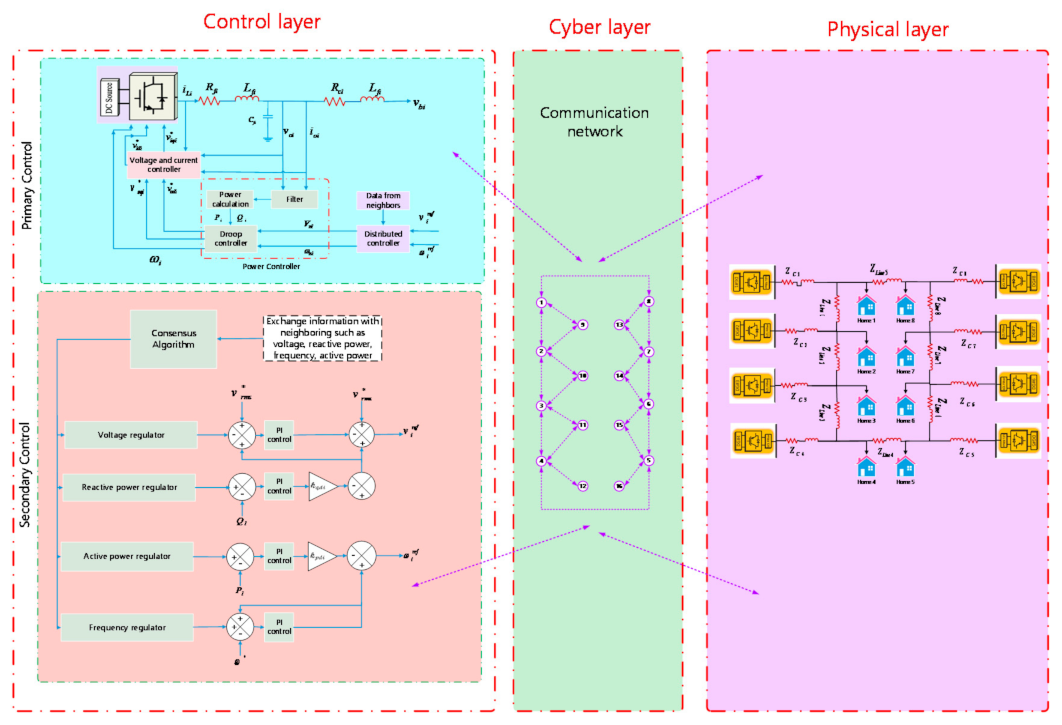

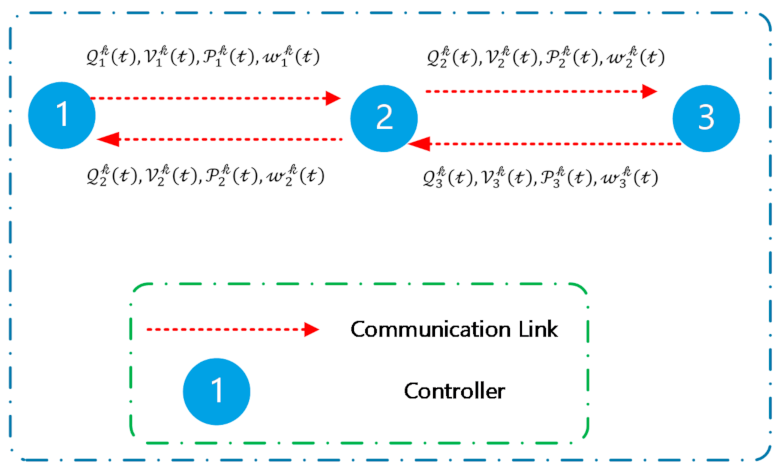
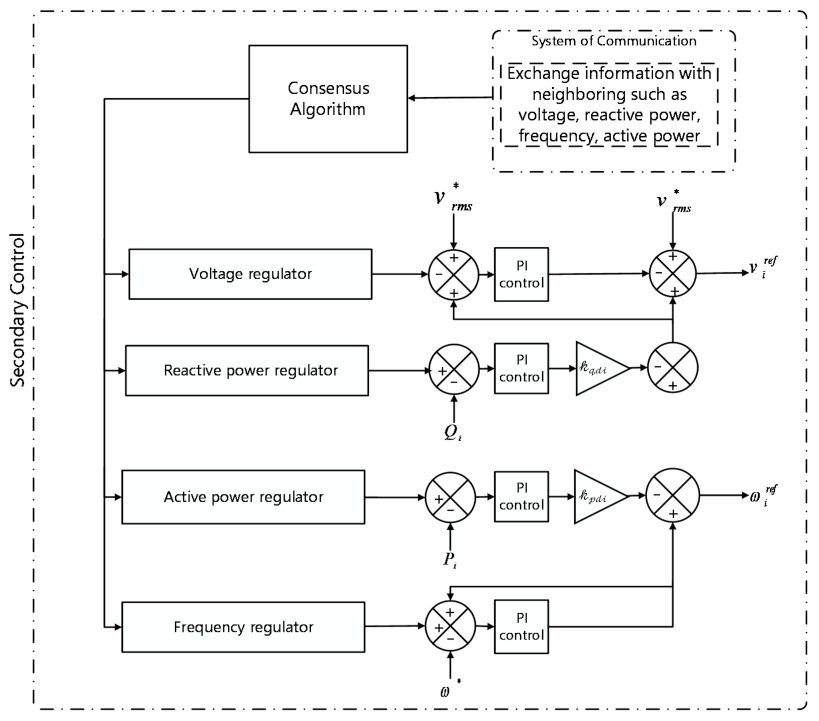

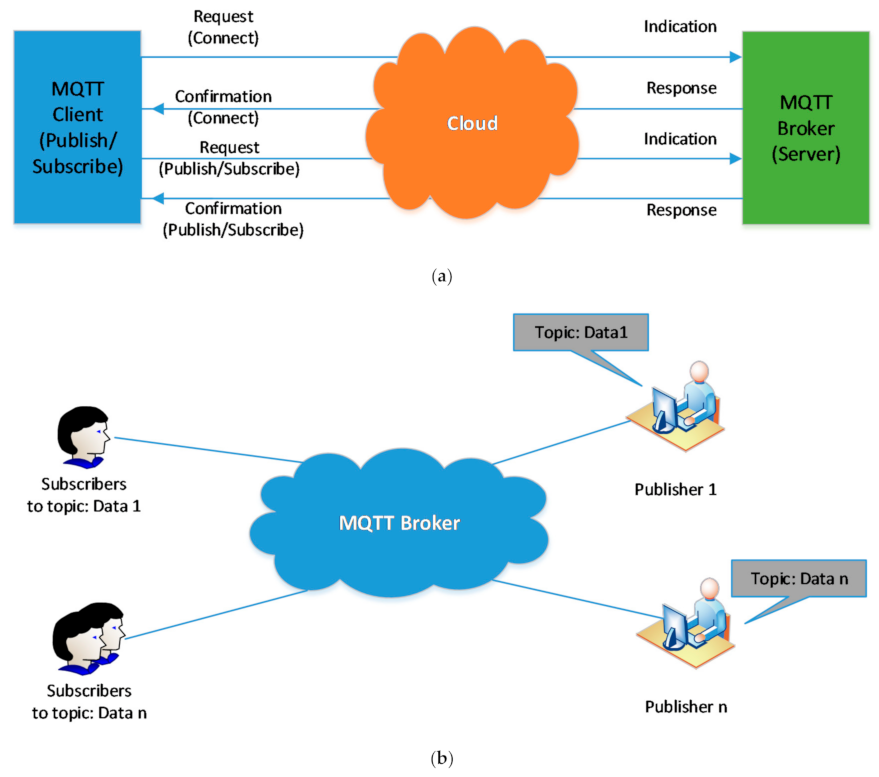

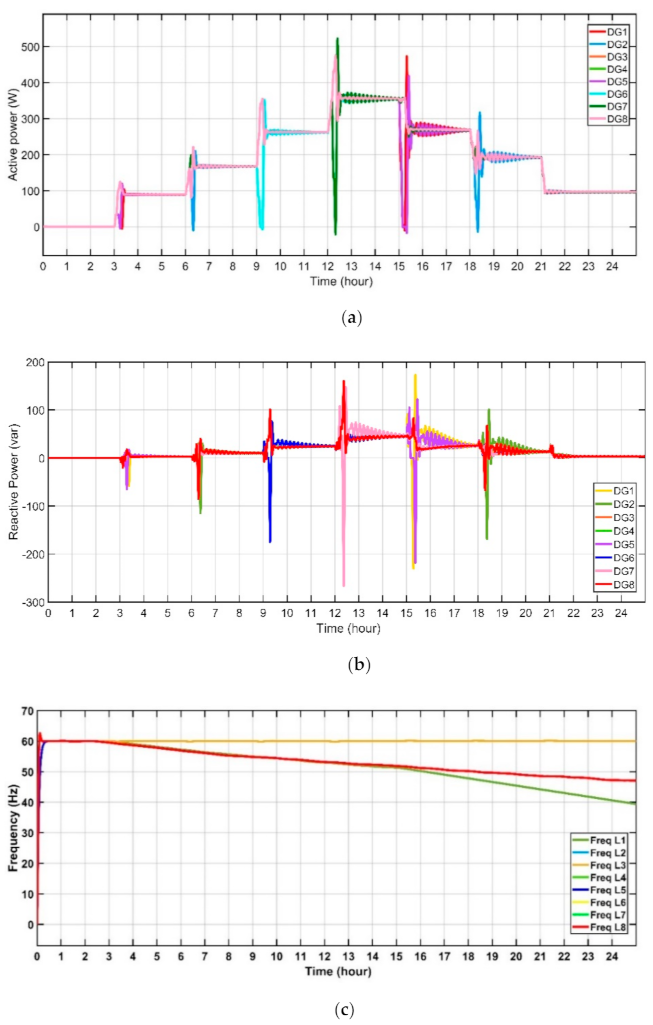
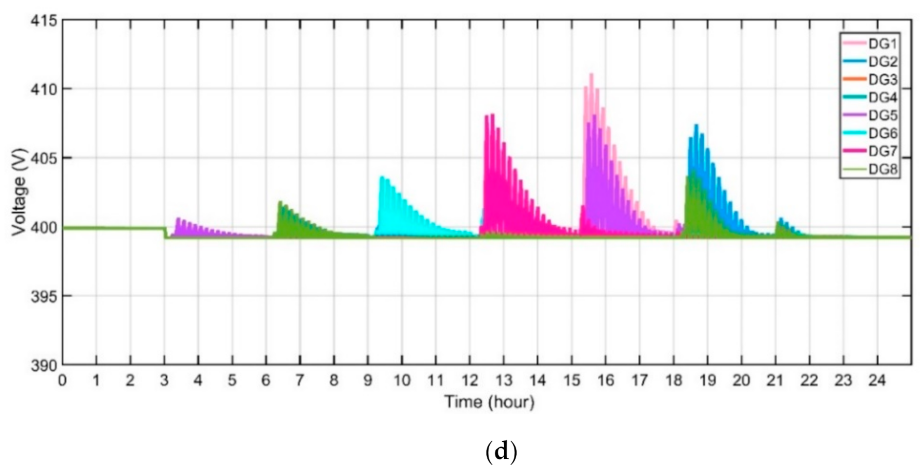
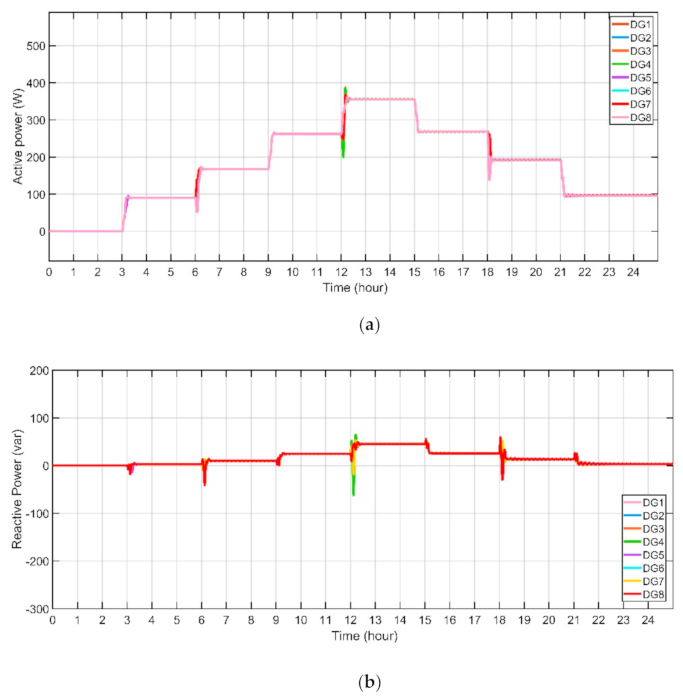
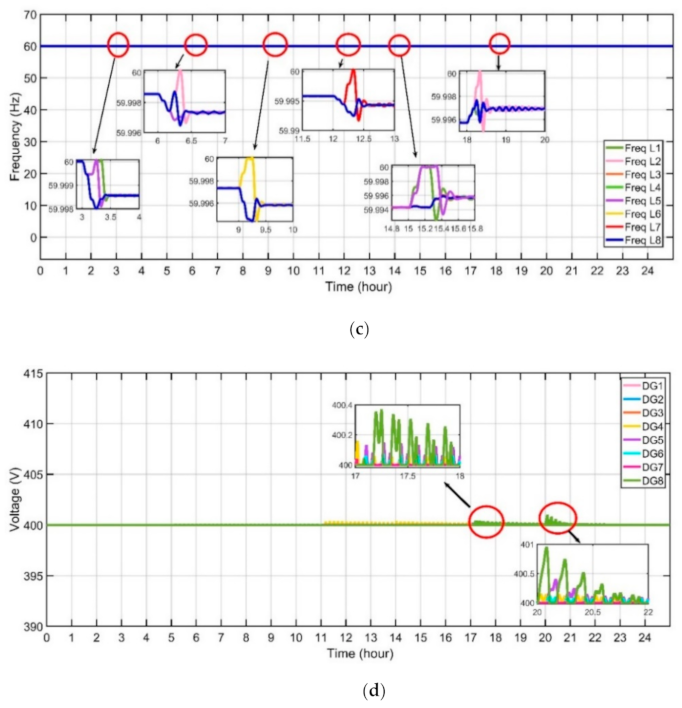
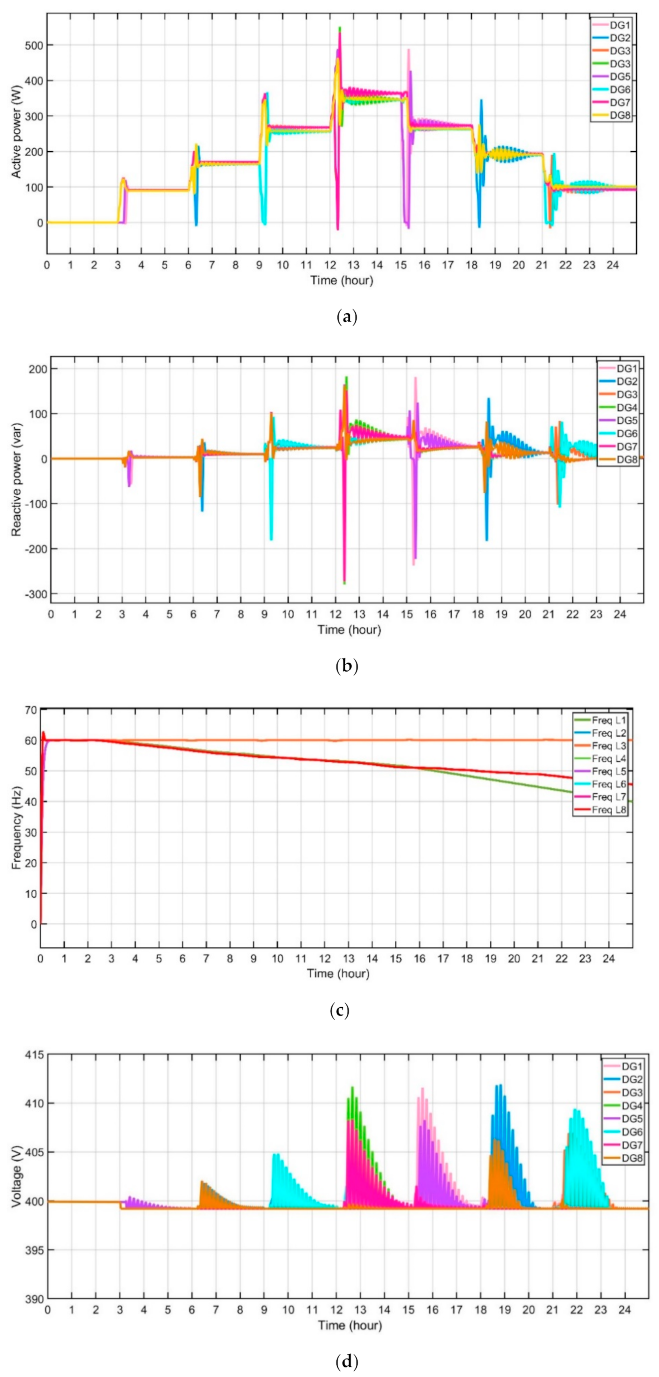
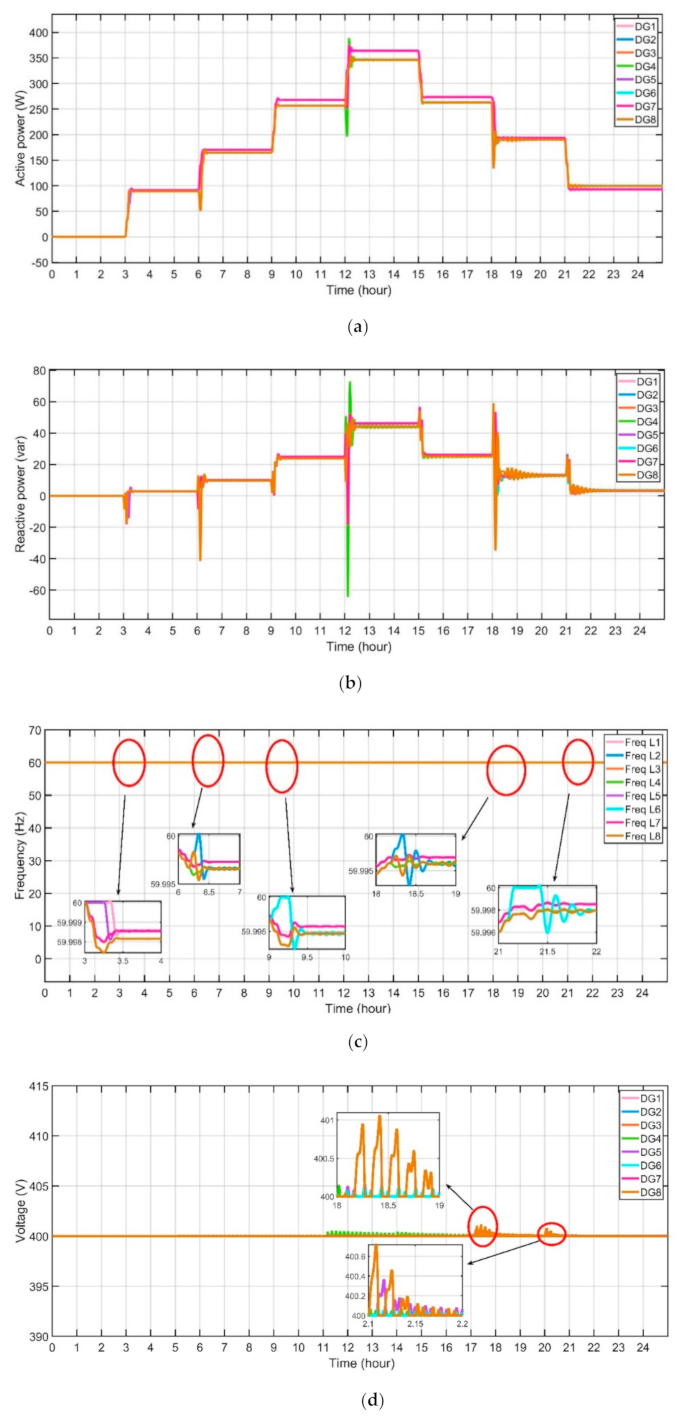
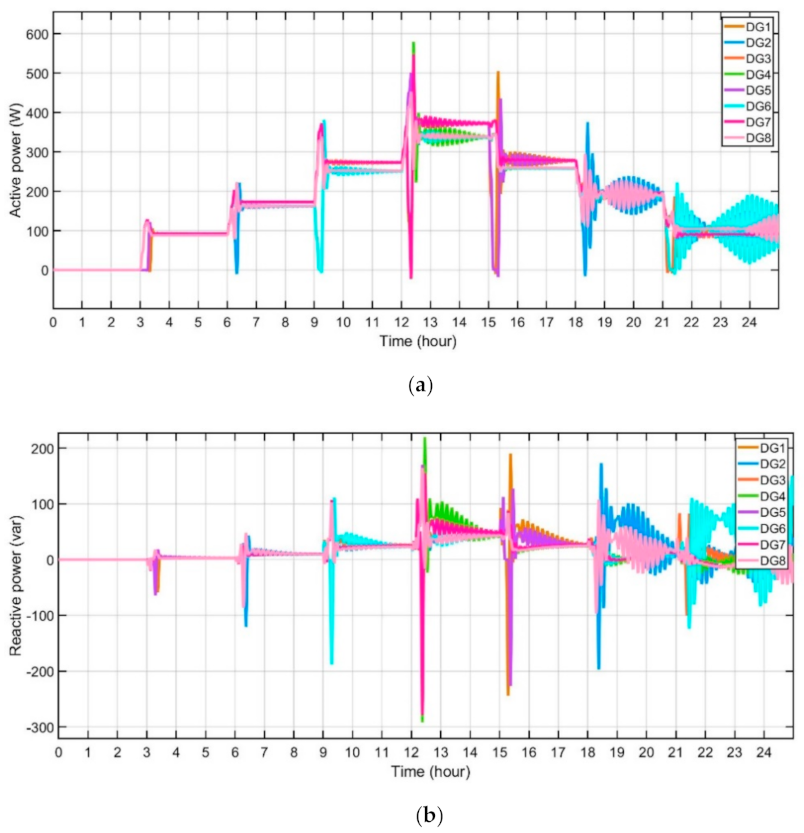
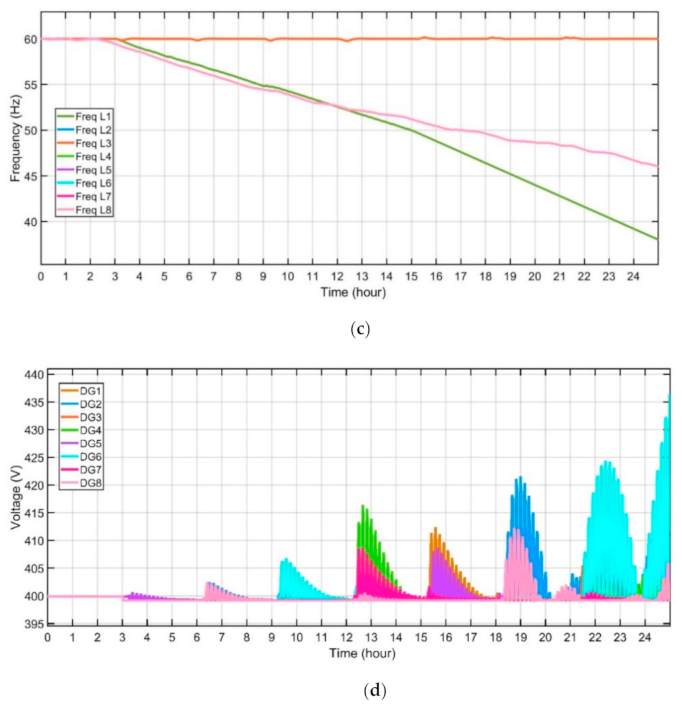
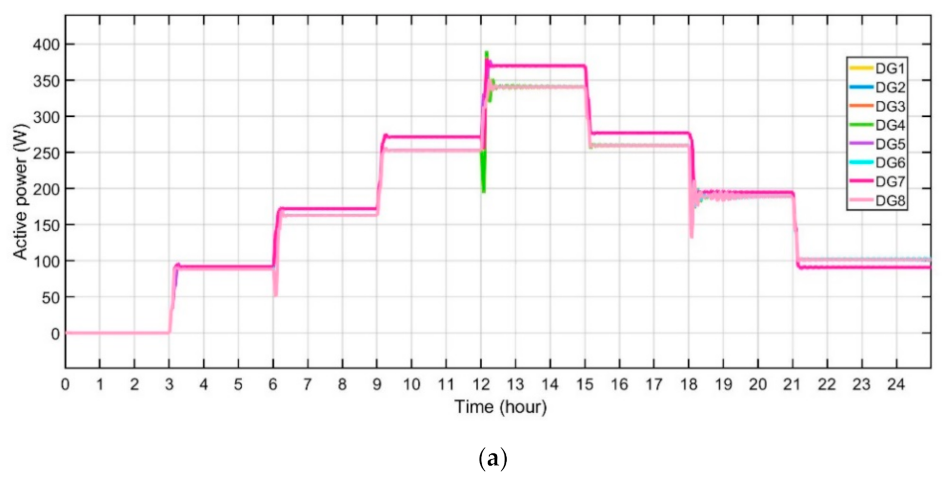
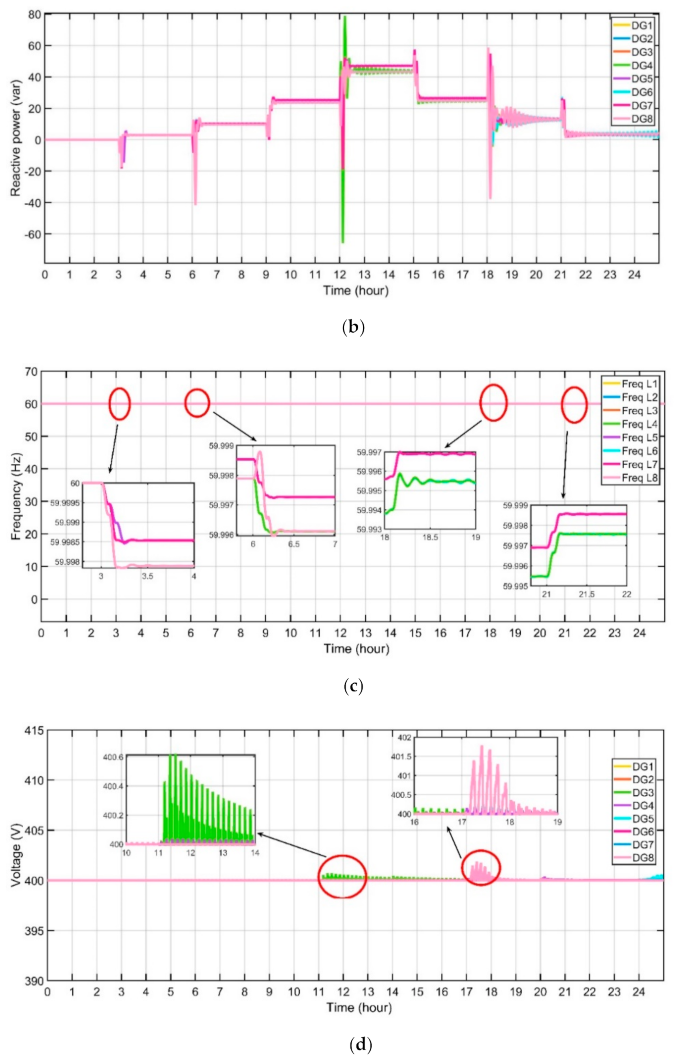
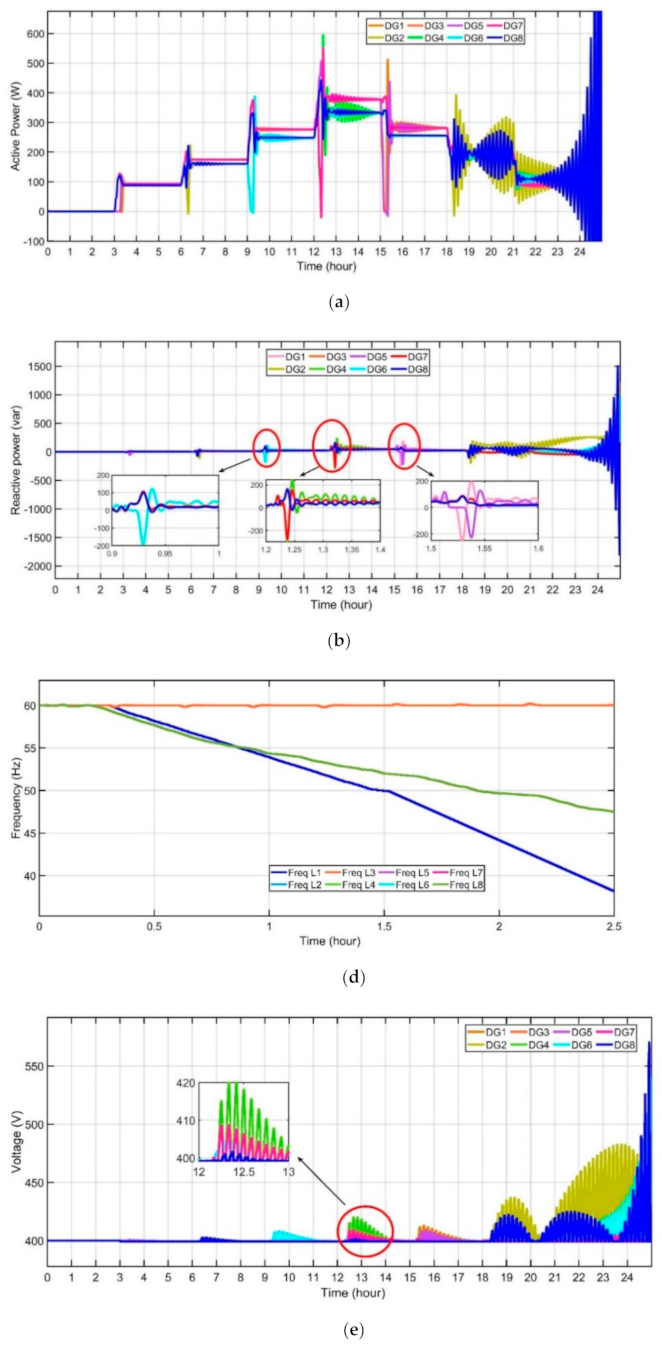
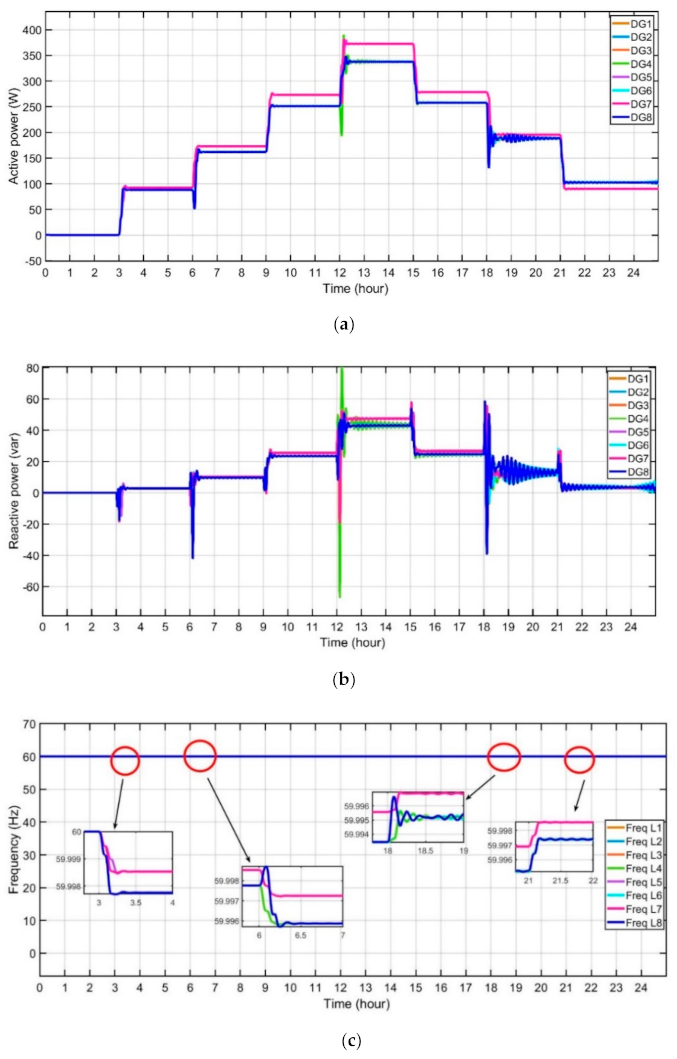


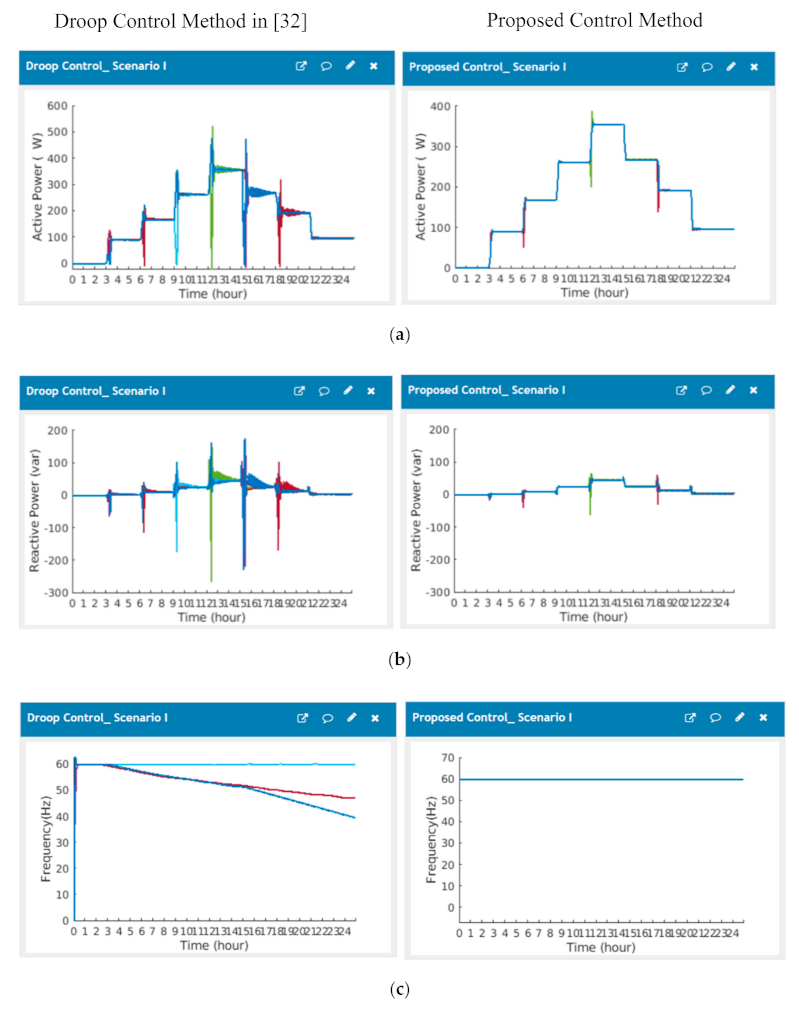

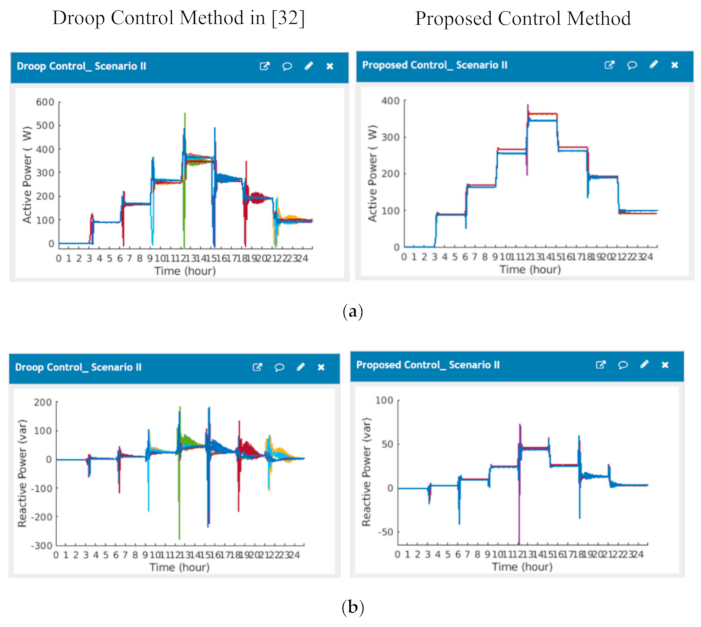
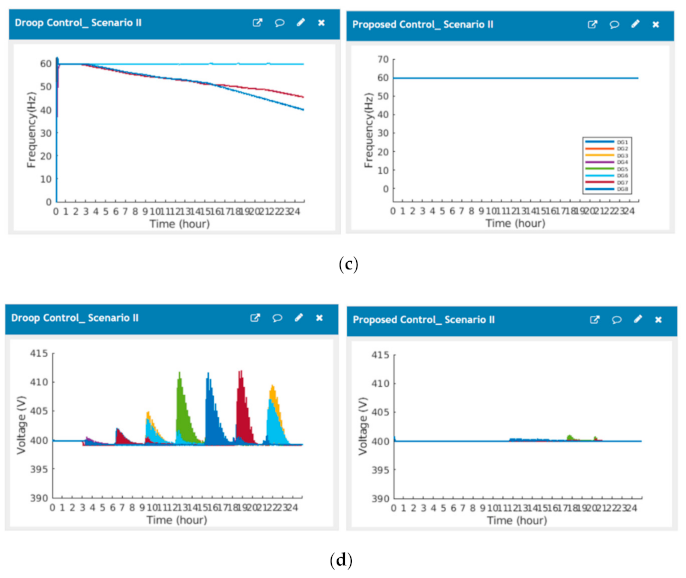
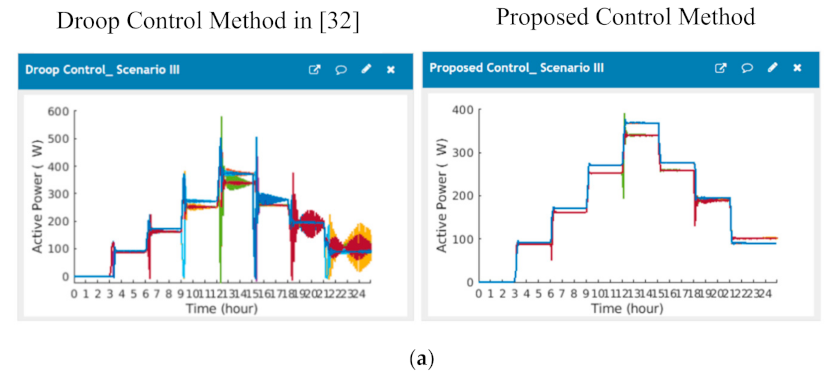
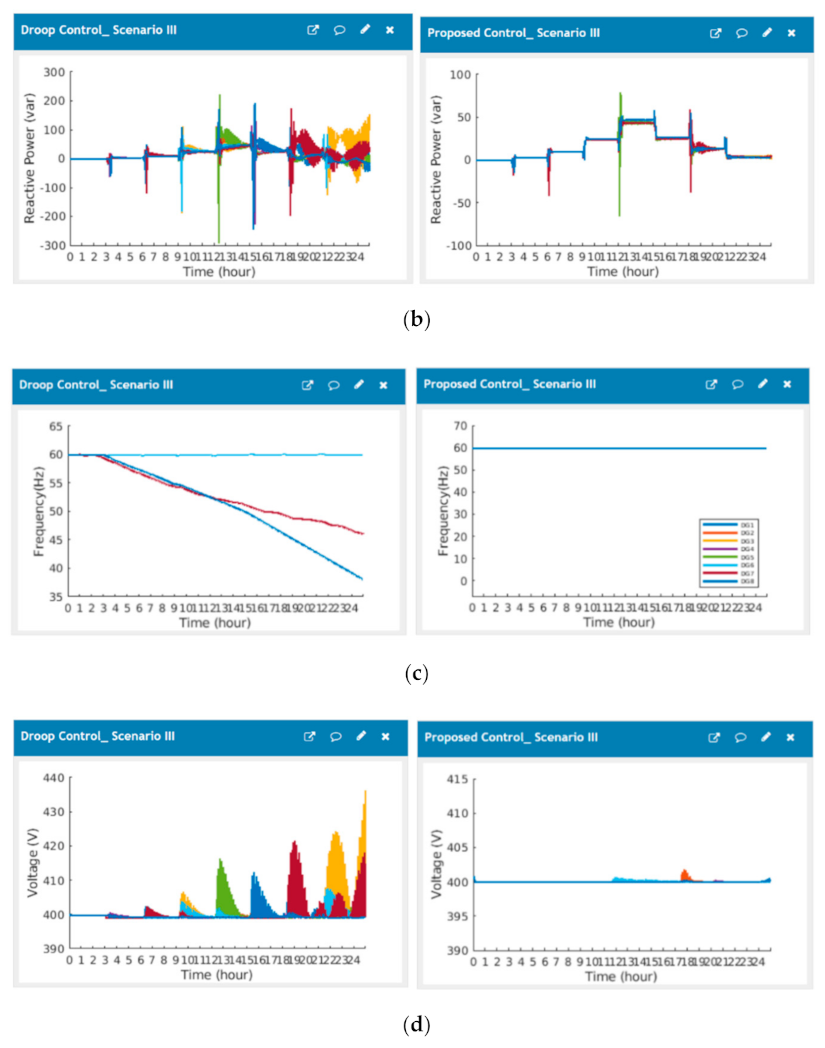
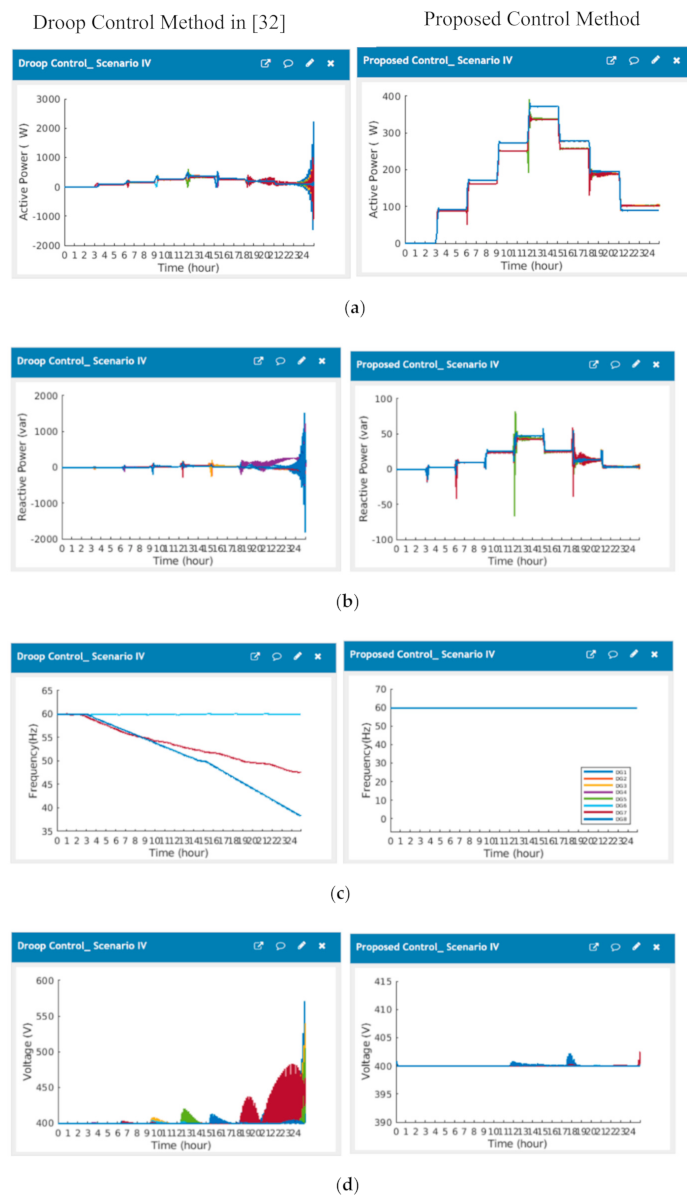
| Parameter | Symbols | Values |
|---|---|---|
| Filter inductance | ||
| Filter resistance | 0.1, 0.05 Ω | |
| Filter capacitance | 47 µF | |
| Voltage Controller | 0.1 | |
| 420 | ||
| Current Controller | 15 | |
| 200,000 | ||
| Impedance | ||
| Line impedance | ||
| Base voltage | 220 V | |
| Input DC voltage | 400 V | |
| Microgrid frequency | 60 Hz | |
| Load 1 | Home 1 | 300 W |
| Load 2 | Home 2 | 350 W |
| Load 3 | Home 3 | 400 W |
| Load 4 | Home 4 | 450 W |
| Load 5 | Home 5 | 425 W |
| Load 6 | Home 6 | 375 W |
| Load 7 | Home 7 | 325 W |
| Load 8 | Home 8 | 275 W |
| Time | Home 1 | Home 2 | Home 3 | Home 4 | Home 5 | Home 6 | Home 7 | Home 8 |
|---|---|---|---|---|---|---|---|---|
| 1 h | OFF | OFF | OFF | OFF | OFF | OFF | OFF | OFF |
| 2 h | OFF | OFF | OFF | OFF | OFF | OFF | OFF | OFF |
| 3 h | ON | OFF | OFF | OFF | ON | OFF | OFF | OFF |
| 4 h | ON | OFF | OFF | OFF | ON | OFF | OFF | OFF |
| 5 h | ON | OFF | OFF | OFF | ON | OFF | OFF | OFF |
| 6 h | ON | ON | OFF | OFF | ON | OFF | OFF | ON |
| 7 h | ON | ON | OFF | OFF | ON | OFF | OFF | ON |
| 8 h | ON | ON | OFF | OFF | ON | OFF | OFF | ON |
| 9 h | ON | ON | ON | OFF | ON | ON | OFF | ON |
| 10 h | ON | ON | ON | OFF | ON | ON | OFF | ON |
| 11 h | ON | ON | ON | OFF | ON | ON | OFF | ON |
| 12 h | ON | ON | ON | ON | ON | ON | ON | ON |
| 13 h | ON | ON | ON | ON | ON | ON | ON | ON |
| 14 h | ON | ON | ON | ON | ON | ON | ON | ON |
| 15 h | OFF | ON | ON | ON | OFF | ON | ON | ON |
| 16 h | OFF | ON | ON | ON | OFF | ON | ON | ON |
| 17 h | OFF | ON | ON | ON | OFF | ON | ON | ON |
| 18 h | OFF | OFF | ON | ON | OFF | ON | ON | OFF |
| 19 h | OFF | OFF | ON | ON | OFF | ON | ON | OFF |
| 20 h | OFF | OFF | ON | ON | OFF | ON | ON | OFF |
| 21 h | OFF | OFF | OFF | ON | OFF | OFF | ON | OFF |
| 22 h | OFF | OFF | OFF | ON | OFF | OFF | ON | OFF |
| 23 h | OFF | OFF | OFF | ON | OFF | OFF | ON | OFF |
| 24 h | OFF | OFF | OFF | ON | OFF | OFF | ON | OFF |
Publisher’s Note: MDPI stays neutral with regard to jurisdictional claims in published maps and institutional affiliations. |
© 2021 by the authors. Licensee MDPI, Basel, Switzerland. This article is an open access article distributed under the terms and conditions of the Creative Commons Attribution (CC BY) license (http://creativecommons.org/licenses/by/4.0/).
Share and Cite
Alhasnawi, B.N.; Jasim, B.H.; Sedhom, B.E.; Hossain, E.; Guerrero, J.M. A New Decentralized Control Strategy of Microgrids in the Internet of Energy Paradigm. Energies 2021, 14, 2183. https://doi.org/10.3390/en14082183
Alhasnawi BN, Jasim BH, Sedhom BE, Hossain E, Guerrero JM. A New Decentralized Control Strategy of Microgrids in the Internet of Energy Paradigm. Energies. 2021; 14(8):2183. https://doi.org/10.3390/en14082183
Chicago/Turabian StyleAlhasnawi, Bilal Naji, Basil H. Jasim, Bishoy E. Sedhom, Eklas Hossain, and Josep M. Guerrero. 2021. "A New Decentralized Control Strategy of Microgrids in the Internet of Energy Paradigm" Energies 14, no. 8: 2183. https://doi.org/10.3390/en14082183
APA StyleAlhasnawi, B. N., Jasim, B. H., Sedhom, B. E., Hossain, E., & Guerrero, J. M. (2021). A New Decentralized Control Strategy of Microgrids in the Internet of Energy Paradigm. Energies, 14(8), 2183. https://doi.org/10.3390/en14082183










